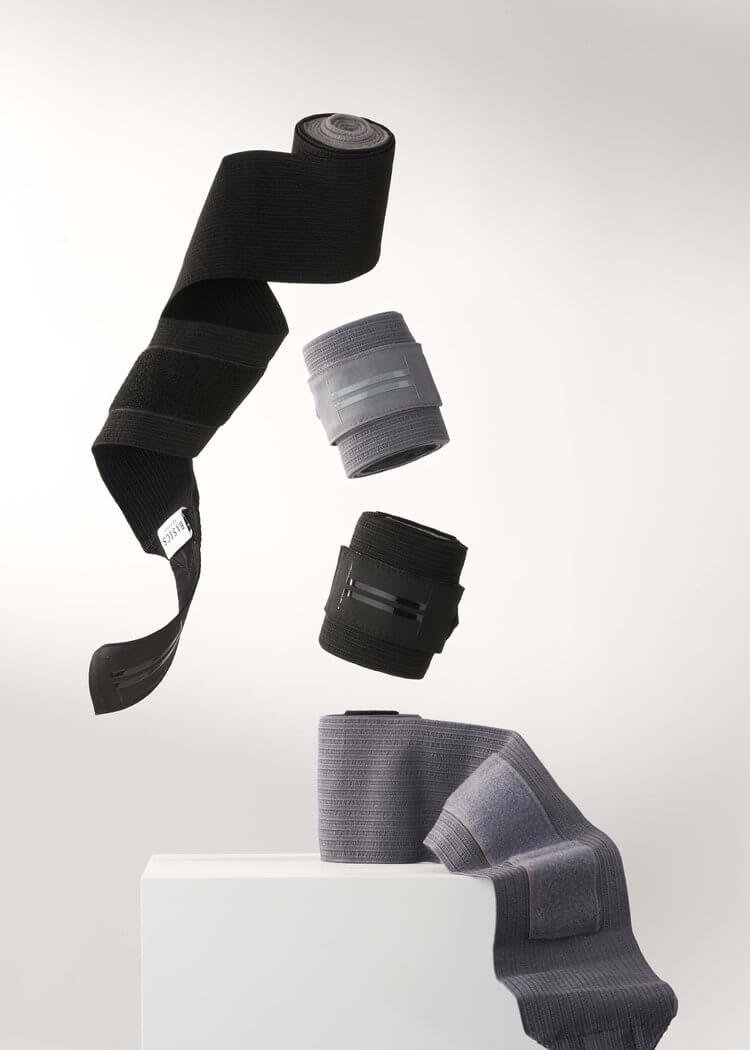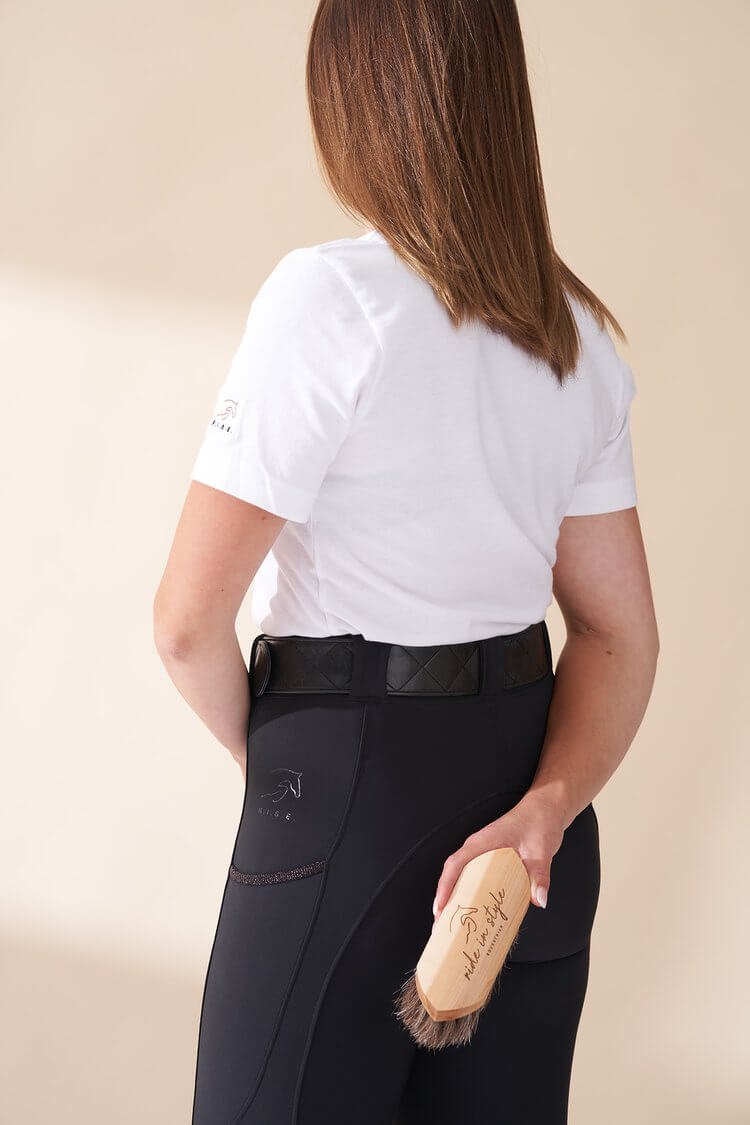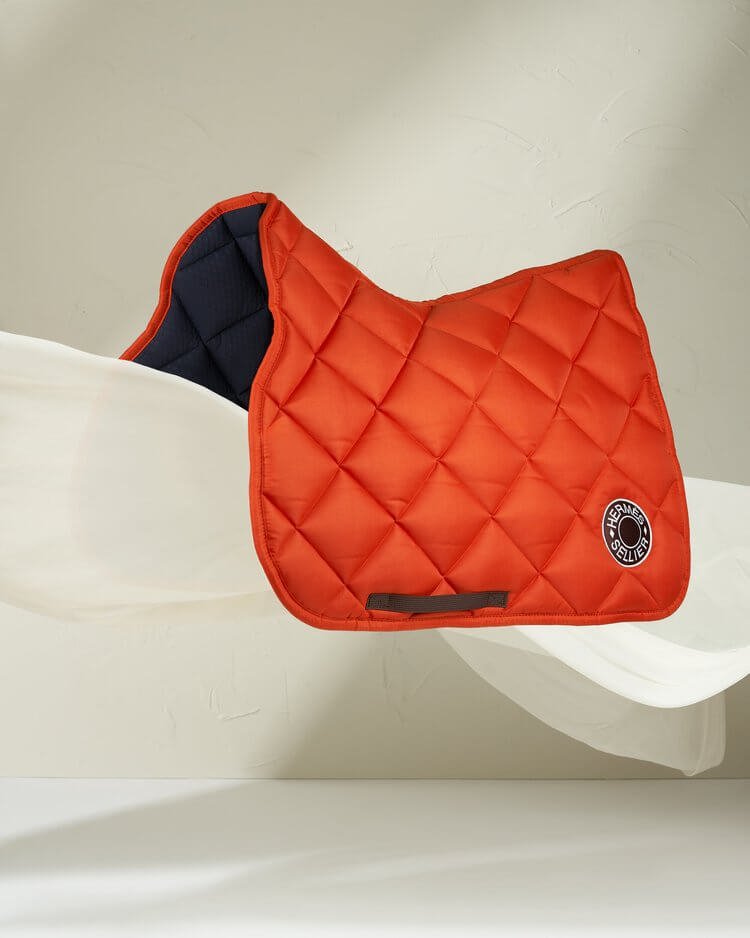Ensuring Success on Set: Effectively Communicating Through Brand Photography
What goes into the making of a successful commercial photoshoot for a brand? Effectively communicating with a brand’s target market takes preparation, research, and of course technical skill, and it goes far beyond creating reels and images for use across social channels! It can feel overwhelming for equine photographers to venture into a side of the industry with so many elements involved in creating the work, and it’s important for brands to ensure that the right photographer has been hired for the job. To help break it down, we speak with Justina Reinhart about the top 5 things that a commercial equestrian photographer can do to ensure success on set.
By Justina Reinhart.
Why hire an equestrian commercial photographer?
One of the main reasons a brand looks to hire a commercial photographer with a deep understanding of the equestrian industry is because you know what their audience expects. While the product needs to be showcased at its absolute best, the horse needs to play a strong supporting role in the narrative the brand wants to create.
Every single thing that makes up a shot represents the brand and plays a role in the audience’s perception of them. The goal of a tack company, for example, is to instil trust with their consumers that their products will perform properly; keeping both rider and the horse safe. This trust is conveyed subliminally, through properly fitting tack, horses that appear healthy, happy and are captured in visually pleasing moments, and an environment that is clean and meets the standard level of care.
This message conveys to the audience that the brand understands horses, and therefore can be trusted to deliver on their wants and needs in a product.
Get to Know the Product
The ultimate goal when working in product photography or marketing is to help your client sell their product(s).
Researching the product and competitors before beginning a job will ensure you have a clear understanding of the product’s features, selling points, and design details. This will allow you as a photographer to plan the set accordingly, whilst, from a marketing standpoint, campaigns can be pre-planned. For example, if a set of reins have a pebbled texture, take note of this and make sure your lighting setup showcases it alongside any other unique features.
It is often helpful to think of things from a consumer’s point of view. When I am shopping online, I dislike when I can’t clearly see the texture of a garment, the type of closure it has, or if the colour is inaccurately portrayed. Images that accurately describe a product result in fewer returns, retained customers for your client, and a greater return on investment for your client’s spend on quality imagery.
This circles back to the trust element good product photography create between the client and their audience. As a photographer with an understanding of what your client’s equestrian customers expect, you can highlight the texture of the reins, or the anatomic curve of a crown piece, communicating to the client that the understanding of the product goes deeper than just the product itself; it’s built on the understanding of what the client’s customers want to see. To ensure this is communicated and delivered, it is important to consistently check in with yourself as on set during a shoot, ensuring that you are keeping the product’s appearance in the forefront of your mind. It can be easy to get wrapped up in the details of keeping ears forward, positioning legs, and losing focus on this!
Understanding the Brand
Whether you are developing a concept for a photoshoot alongside a brand and have a fair amount of creative freedom, or you have been brought on to a project under the eye of an art director; having a clear understanding of the brand’s voice, the visual language they are associated with, and their target market is key to creating impactful solutions. It is important to ask plenty of questions in the initial planning stages and research the client in order to ensure your thinking is in line with their expectations.
Whether you are developing a concept for a photoshoot alongside a brand and have a fair amount of creative freedom, or you have been brought on to a project under the eye of an art director; having a clear understanding of the brand’s voice, the visual language they are associated with, and their target market is key to creating impactful solutions. It is important to ask plenty of questions in the initial planning stages and research the client in order to ensure your thinking is in line with their expectations.
The ultimate goal is to help the client deliver the best results for the campaign that you are photographing. Developing a deeper understanding of the brand enables you to think critically and with confidence to bring new ideas to the table as the creative and ultimately sell the narrative. This allows you to take new ideas and mould them to fit the brand’s visual language as well as all associated campaigns: creating work that feels fresh and new, yet still familiar.
When creating images or campaigns for any marketing activity, you need to understand your client’s goals and target market to help the audience see themselves in the brand. If you are working with a heritage brand that uses a lot of lifestyle imagery to focus on the durability of their product in the environment, you likely won’t choose to photograph their pieces on a modern-looking set, with a clean and sterile feel. Likewise, if the target demographic for a campaign is women in their sixties, you likely won’t use teenagers as models.
Creating Unique Work
In a crowded market space with no shortage of equestrian brands, each of these brands has developed unique elements that help them stand out from their competitors and allow their ideal clients to align with them. Each brand has its own voice, so when it comes to telling its story, it should always be done in a unique way.
Aside from the serious repercussions of copyright infringement, original ideas hold attention longer in a world bombarded with information. Unique ideas are created by taking multiple different, unrelated sources of inspiration and bringing them together in a way that hasn’t been done before.
The easiest way to do this is to look beyond the equine photography genre to seek inspiration. Look at different mediums of art and recognize what draws you in, watch films, explore different textures in nature, and research different styles of architecture. There is inspiration quite literally everywhere if you mindfully search for it.
Inspiration does not only have to be something that you look at but can also come from a feeling or personal experiences. In relating work to the equestrian industry, think about universal feelings that connect equestrians and how to portray that visually. Think about what a product stands for: Are reins a braided piece of leather or are they connection and guidance in the human and equine partnership?
Remember that imagery will always play a crucial role in brand awareness, especially when it comes to equestrian marketing. Great images can tell a story, transmit emotions and create a sense of exclusivity, which is essential in today’s digital age. Brands should always prioritise quality imagery, and it is up to you, the photographer, to capture their story. An important aspect of any marketing effort is to engage the target audience: This is impossible without high-quality imagery that not only gives customers more information about a product, but ultimately carries and supports the journey your photography is taking the customer on. Only by uncovering and relaying the desired feelings the brand wants to display to its customers, can you successfully deliver images that will work well in accordance with any marketing campaign.
Prioritise Where You Want to Be
One of the hardest things to wrap your head around when you’re in the early stages of running your business as an equestrian product photographer is the concept of saying no to jobs that are not the right fit for you.
When you are first starting out, there is no harm in shooting a variety of things to get your feet wet and gain experience. But as you develop your distinct artistic voice and visual identity, you will want to be intentional with the projects you take on and photograph. You should only say yes to the jobs that support the direction for where you want to take your work.
As a photographer who shoots mainly studio-lit, fashion-influenced images of equestrian products, it would be rare to see me photographing at a horse show. I have developed my skill set, artistic voice, and equipment list based on this approach. I don’t own a 300 or 400-mm lens because while it’s sure to be useful to someone photographing equestrian sport in the show ring, it doesn’t hold a lot of use to me in the studio. My resources are better spent investing in lighting, grip, etc. Focusing in on a specific niche in the industry allows you to become an expert in that area.
Head to Justina’s website for more information, or follow her on Instagram.







